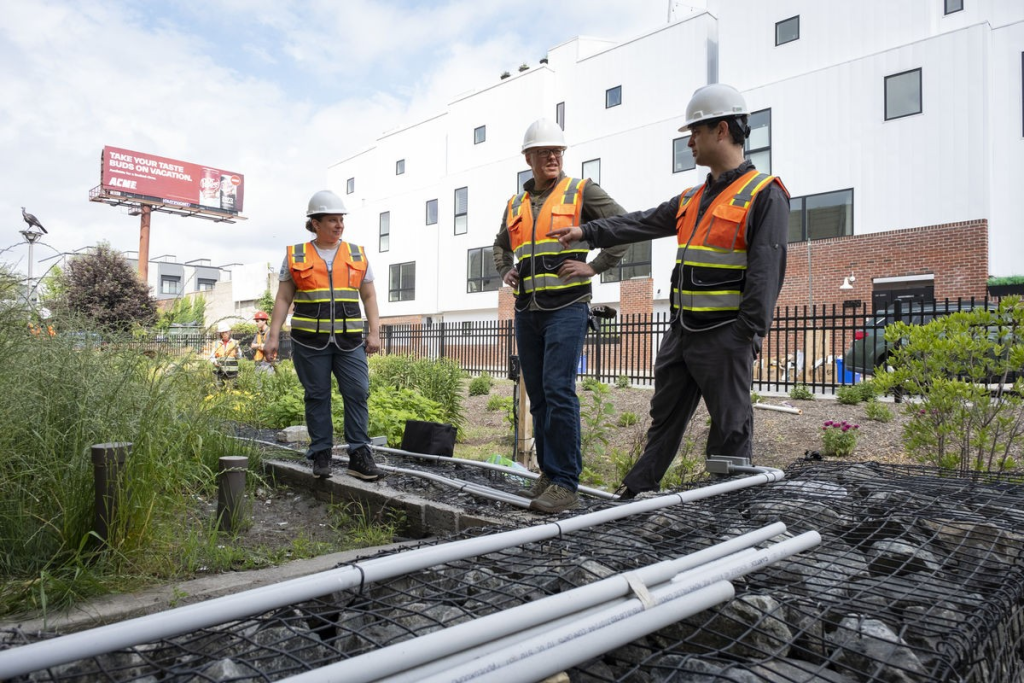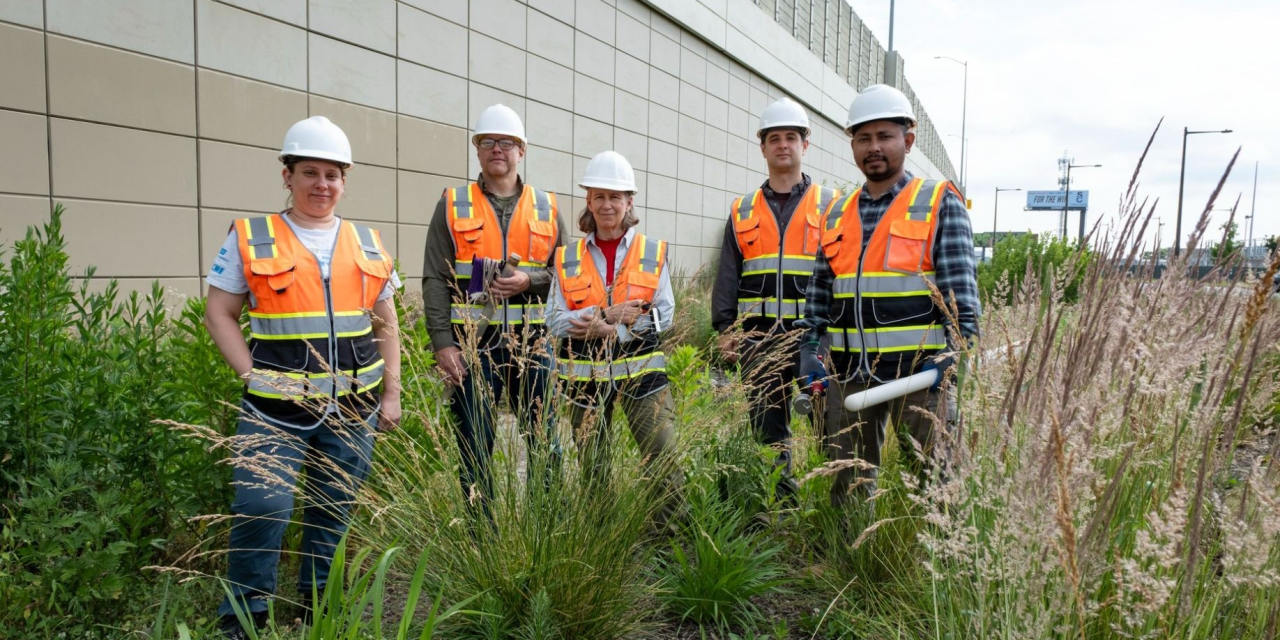As drivers navigate through Philadelphia’s streets, they might spot bioretention basins teeming with different types of flowers and grasses. However, even during the summer, many of the plants are still brown. To identify the cause of the dying vegetation, a group of scientists commissioned by the Pennsylvania Department of Transportation (PennDOT) set out on the case.
Narrowing It Down
Bioretention basins feature relatively thick layers of soil, typically ranging from 0.5 to 1 m (1.6 to 3.2 ft), that store and filter stormwater, effectively managing both water quantity and quality. These basins often feature a diverse array of vegetation, which serves multiple functions: stabilizing the soil, maintaining filtration and infiltration capacities, redirecting water to the atmosphere through transpiration, absorbing excess nutrients and contaminants, and providing urban habitats and associated ecosystem services. Additionally, bioretention basins receive stormwater from roadway surfaces at levels usually 5 to 15 times greater than the basin’s surface area, leading to high concentrations of roadway contaminants.
To determine whether the cause of Philadelphia’s dead plants was some type of roadway contaminant or another problem altogether, the researchers needed to gather data. The results of their investigation appear in the Journal of Environmental Management.
From 2017 to 2021, researchers from Temple University (Philadelphia) and Villanova (Pennsylvania) University studied the chemical properties of stormwater generated from precipitation events exceeding 0.25 cm (0.1 in and took monthly soil samples from five bioretention basins within Philadelphia. Researchers also inventoried plants and assessed changes in plant and leaf growth among the bioretention basins included in the study.

After analyzing the collected data, researchers determined that the primary cause of the brown plants was road-deicing salt, as monitoring the inflow of stormwater revealed extremely high sodium concentrations in winter. Although only a portion of this salt remained in the basin soil and porewater by the beginning of the growing season, the results showed that enough salt persisted to cause significant lethal and sublethal effects, particularly in areas where runoff tended to accumulate.
The results were surprising to the research team.
“I hadn’t worked with bioinfiltration plantings before and was definitely surprised to see how big an effect deicing salt had,” said Josh Caplan, the study’s lead author and Associate Professor of Horticulture at Temple University. “I don’t think I was alone in this either. In fact, I remember a few stormwater engineers telling me that deicing salt washed out of basins before plants came out of dormancy in spring. This may very well be true in some green stormwater infrastructure, namely those that don’t get the kinds of salt loads that these do, but highway runoff sometimes has as much salt as seawater!”
Non-Salty Solutions
Although snowy or icy conditions that prompt state and municipal agencies to apply salt usually occur when plants are dormant, the salts used for deicing roads still can have a significant impact on bioretention plantings. According to the study, in years with deicing events in late winter or early spring, the final pulse of salt can enter bioretention basins within a month of leaf emergence. Since basin salinity can stay elevated for over a month after the last winter storm, there can be a considerable overlap period in years with late deicing events. A promising strategy to mitigate the effects of deicing salts on plants in bioretention basins is to use salt-tolerant species.
“Because there’s such a variety of mechanisms and so much variation in how they manifest, we should really think about salt tolerance as a spectrum rather than a binary trait,” Caplan said. “We’re testing around 13 types of allegedly salt-tolerant plants in a pair of PennDOT’s basins now. A few are doing really well, like seaside goldenrod, common rush, and feather reed grass.”
Other methods may help reduce salinity effects in certain cases, according to the researchers. Flushing bioretention basins with fresh water after the final deicer application in spring could be effective but might be cost-prohibitive on a large scale. Implementing management practices to minimize excess deicing salt usage would also benefit basin plantings, as well as groundwater and downstream waterbodies. Additionally, using non-sodium-chloride-based deicers could lessen salinity effects on plants, though their effectiveness may vary by region.
Caplan said planners, engineers, and landscape architects around the world can benefit from the research being conducted in Philadelphia and added that the study has been requested from as far away as Oslo, Norway.
“Many cities around the world have the same kinds of stormwater problems that we have here,” Caplan said, in a release. “Philadelphia is on the leading edge of using green stormwater technology to deal with it, but people are pushing that edge forward in different ways in different places so we’re all trying to learn from each other.”
Top image courtesy of Joseph V. Labolito/Temple University

ABOUT THE AUTHOR
Michelle Kuester is a staff member of the Water Environment Federation, where she serves as Associate Editor of Stormwater Report and Water Environment & Technology magazine. She can be reached at mkuester@wef.org.





